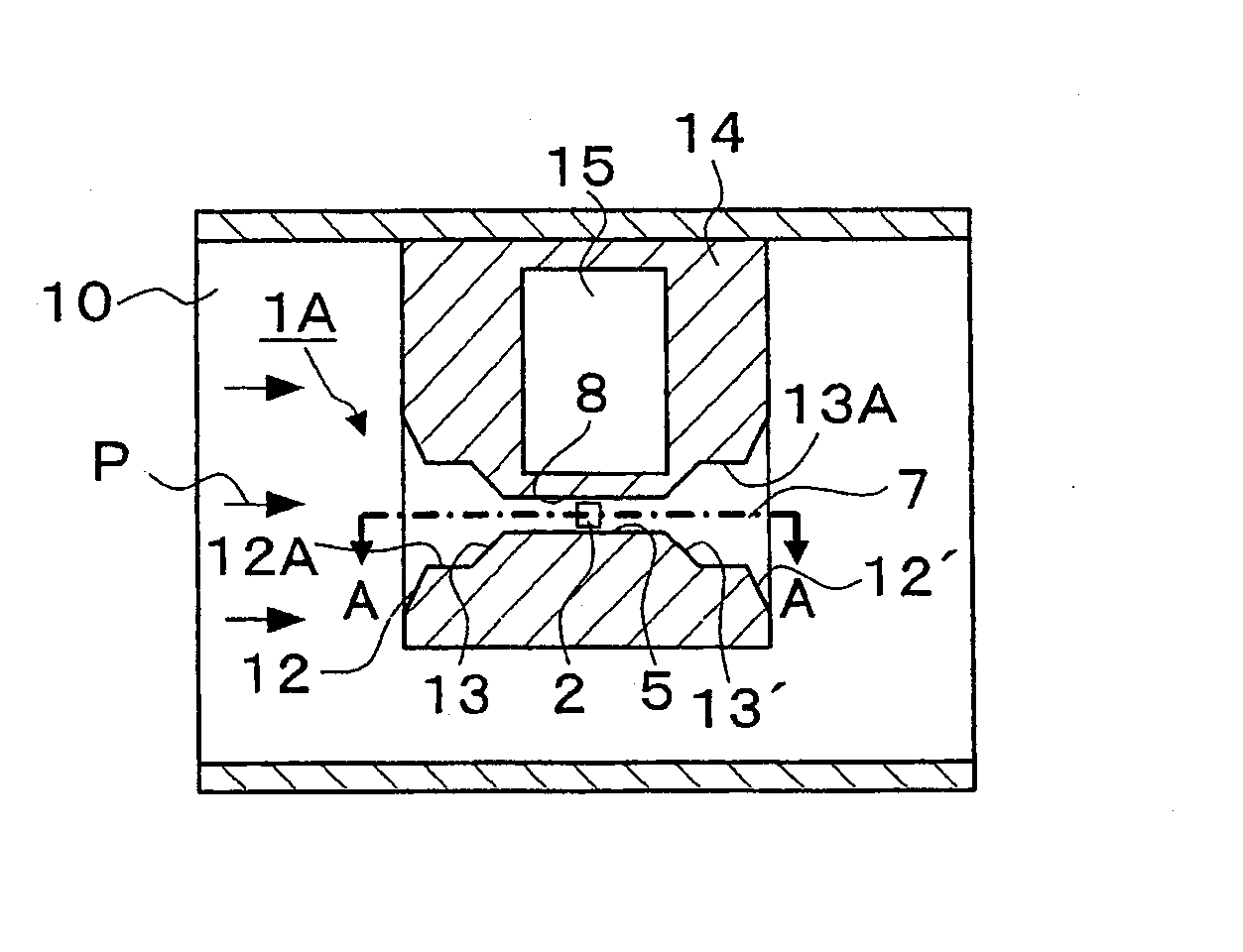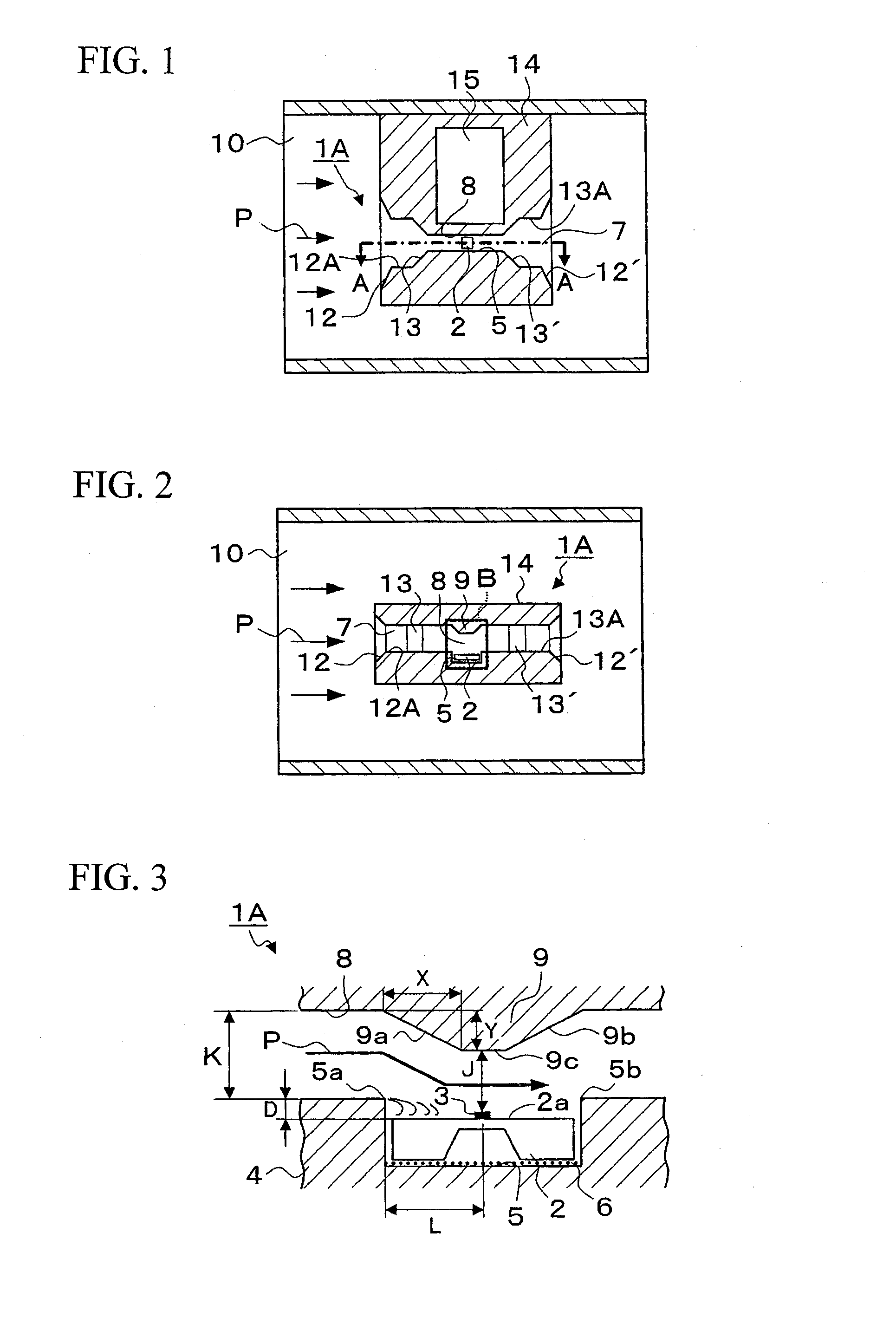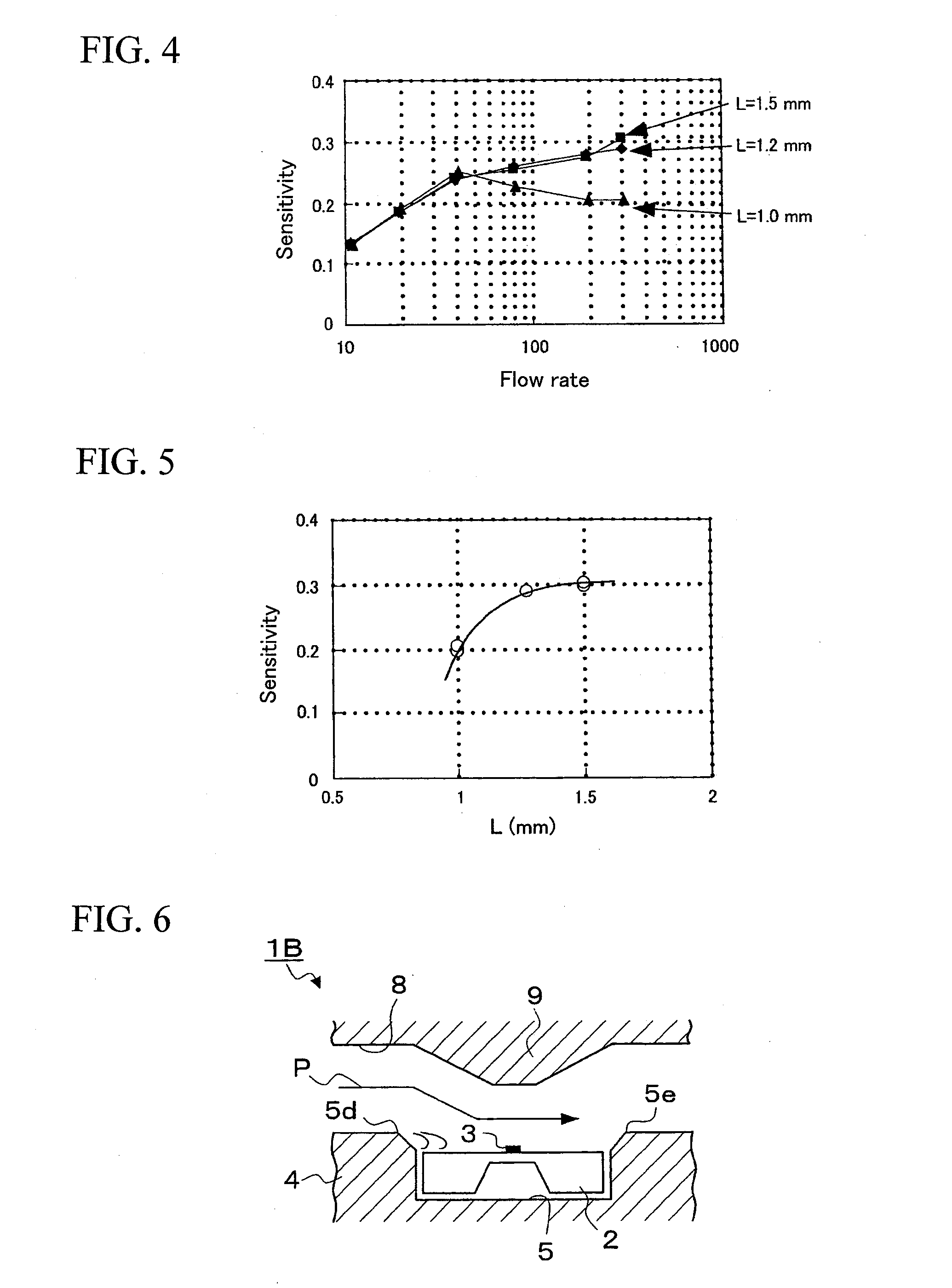Thermal type flow sensor
- Summary
- Abstract
- Description
- Claims
- Application Information
AI Technical Summary
Benefits of technology
Problems solved by technology
Method used
Image
Examples
first embodiment
[0047]FIG. 1 is a cross-sectional view illustrating a state wherein the thermal type flow sensor 1A according to a first embodiment of the present invention is installed in a main passage 10 (the air intake passage of vehicle-mounting internal combustion engine); FIG. 2 is an enlarged cross-sectional view taken along the line A-A of FIG. 1; and FIG. 3 is an enlarged view of the region “B” of FIG. 2.
[0048]The thermal type flow sensor 1A shown herein is provided therein with a sensor element 2 equipped with an exothermic resistor 3 which is formed on a substrate for detecting the flow rate of the fluid passing through a main passage 10, and also provided therein with a circuit board 15 on which electronic circuit components for detecting flow rate and a wiring pattern are formed. Further, the thermal type flow sensor 1A is further provided with a sensor housing 14 in which a sub-passage 7 having a rectangular cross-section is formed. This sensor housing 14 is mounted inside the main p...
second embodiment
[0061]FIG. 6 shows a main portion of the thermal type flow sensor 1B according to a second embodiment of the present invention. In the thermal type flow sensor 1B of this embodiment, the components which correspond to those of the thermal type flow sensor 1A according to the first embodiment will be identified by the common symbols and differences in structure between these embodiments will be mainly explained in the following description. In this embodiment, the upper corner portion 5d on the upstream side of the recessed portion 5 formed in the base portion 4 as well as the upper corner portion 5e on the downstream side thereof is formed into a slanted surface (chamfered). Namely, the peeling to be generated due to the provision of the step portion would become larger as the configuration of passage is sharply changed. Therefore, the corner portions 5d and 5e of upper edges of the upstream and downstream sides of the recessed portion 5 are formed into a slanted surface, respective...
third embodiment
[0062]FIG. 7 shows a main portion of the thermal type flow sensor 1C according to a third embodiment of the present invention. In the thermal type flow sensor 1C of this embodiment, the components which correspond to those of the thermal type flow sensor 1A according to the first embodiment will be identified by the common symbols and differences in structure between these embodiments will be mainly explained in the following description. In this embodiment, the exothermic resistor 3 is positioned so as to off-set it from the center of the sensor element 2 toward the downstream side. Namely, when the distance between the upstream side upper edge 5a of the recessed portion 5 and the exothermic resistor 3 (the center thereof) is represented by “L1”, and when the distance between the exothermic resistor 3 and the downstream side upper edge 5b of the recessed portion 5 is represented by “L2”, they should be regulated to satisfy the expression of: L1>L2. In this constricted portion 9′ wh...
PUM
 Login to View More
Login to View More Abstract
Description
Claims
Application Information
 Login to View More
Login to View More - R&D
- Intellectual Property
- Life Sciences
- Materials
- Tech Scout
- Unparalleled Data Quality
- Higher Quality Content
- 60% Fewer Hallucinations
Browse by: Latest US Patents, China's latest patents, Technical Efficacy Thesaurus, Application Domain, Technology Topic, Popular Technical Reports.
© 2025 PatSnap. All rights reserved.Legal|Privacy policy|Modern Slavery Act Transparency Statement|Sitemap|About US| Contact US: help@patsnap.com



